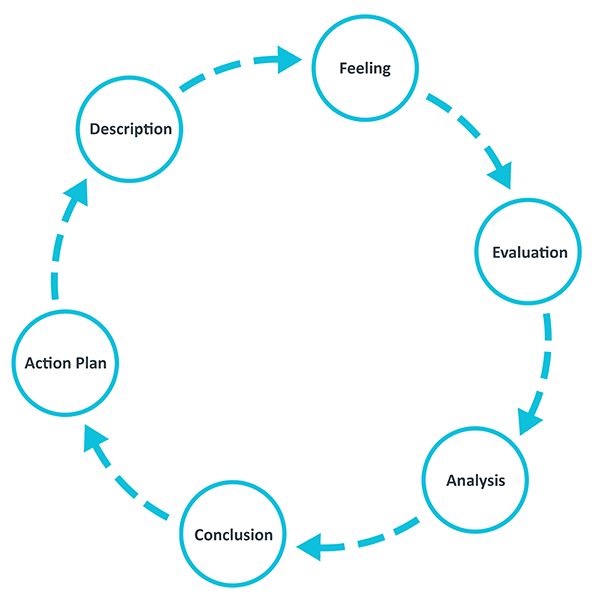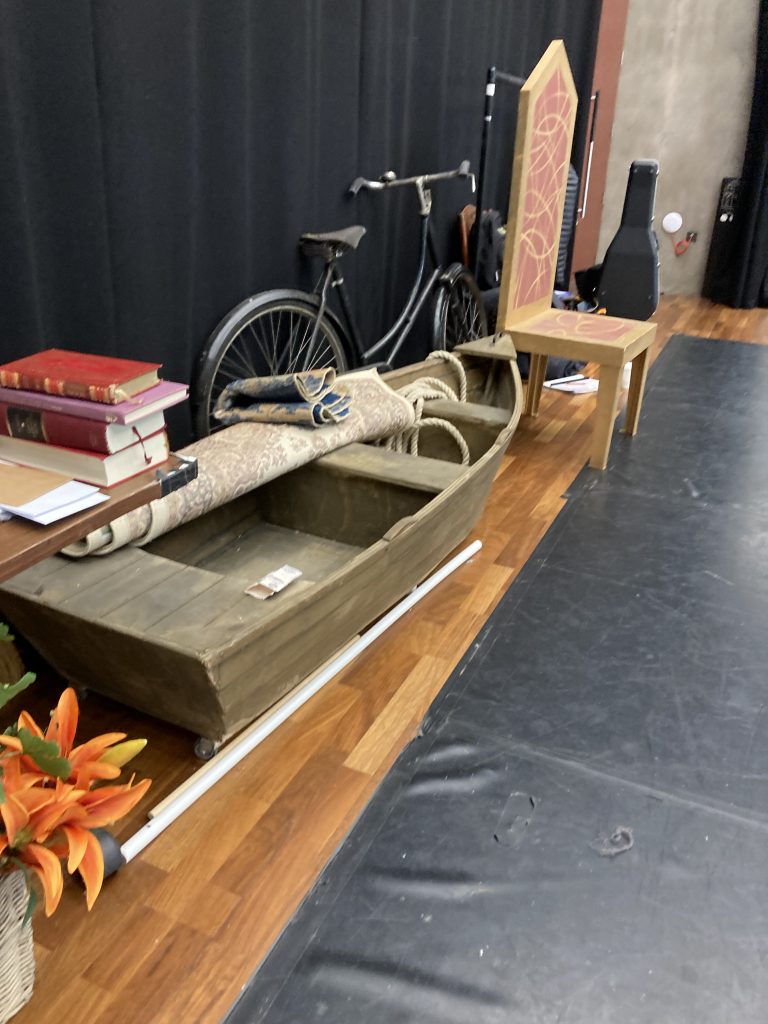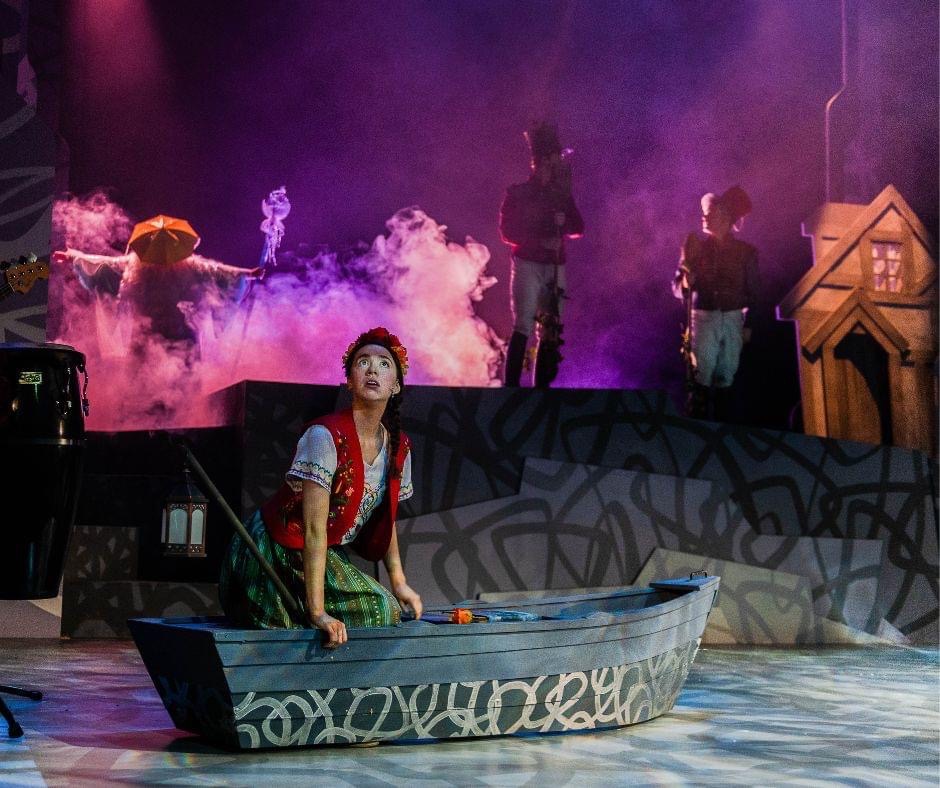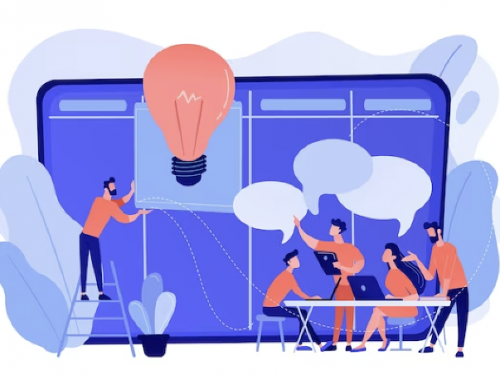Establishing your place and believing you belong there!

In a work experience environment, is there a difference between learning by shadowing and learning by doing?
Throughout my experience within the Stage Management Team at The Lyric Theatre, I found that there was so much to learn from watching a role that is always busy, always on the go. However, because everyone in the team were all on tight deadlines with specific jobs to be done, and I didn’t necessarily have a specific role for myself, I felt that I didn’t want to overstep or get in the way. And so a challenge that I faced throughout the process was navigating my position within the wider team, learning when to step up and when to step back.

I will be using Gibbs Reflective Cycle to analyse a specific instance that highlighted this challenge as it provides a cohesive and detailed look at the different aspects of the experience.
What Happened?
Starting my placement, I was swept up into the busy world that is technical management. Walking into the office at 9am on the first day, I was met with six desks with six people efficiently working away on their various tasks, preparing for the meet and greet that was to start at 10am. At The Lyric, there is a core team of three stage managers – a CSM and two DSMs – and then freelance ASMs are brought in for specific shows. I alternated between sitting in the rehearsal room watching the DSM and adopting the role of an ASM and actively working on things for the shows. And this challenging aspect came to a tipping point one day in early October, when the team encountered an issue with a significant prop piece within the show.

The boat pictured to the left was altered so that the protagonist could push it across the stage with her legs to ‘row’ it, which meant removing the bottom of it and then attaching wheels. The problem that was brought to me and Stephen (The DSM I was shadowing that day), however, was that after using it for a week or so in rehearsals they realised it wasn’t giving the range of movement they needed. As the wheels were fixed they could only go forward or back, and so the job for us was to remove those wheels and replace them with ones that rotated 360 degrees.
We went to the workshop and retrieved a power drill and a box of screws and drill bits, taking them down to the scene dock where the boat was and that was where the lesson began.

How did I feel?
Initially, I felt apprehensive. Previously, most of what I had been doing was observing or helping source props online and this was a hands-on task and one that I had never done before! And so I had to overcome the mental block of believing I would be more of a hindrance than a help.
But I was also excited, as this meant I would be learning a practical skill of using a power tool – an invaluable ability within stage management, and also in life too!
What was good? and what was bad about the experience?
I was taught the safety and mechanics of using the drill, but I was also immediately asked questions like which would be the best screw to use and quizzed on each part of what was just explained. And after an initial demonstration of removing the first screw from the fixed wheels, he handed it over to me to remove the remaining screws and then attach the four new rotating wheels; the full responsibility of the job was on my shoulders, while he observed.
There were a few times that I messed up, but every time I did we would talk over what happened and then I would get straight back to it. There was no indication of frustration or want to just do it himself while I took a step back.
“I believe the most effective way to teach is to thrust the student into doing it” – Lawrence Stern (2007:18)
What did this mean for me?
For me, this really demonstrated the team orientated nature of technical production within theatre. Even though the roles are split into different titles, everyone helps out wherever they can to get the job done, it wasn’t just me that was oscillating between positions and so this meant I wasn’t less a part of it because I did.
And so, what was really valuable, was the realisation that it wasn’t just a lesson in DIY but one of trusting my abilities and my value to the space.
“It is essential to realise that a good team will share their skills, abilities and experience in an interactive and flexible way” (2010:13)

Conclusion – of both the experience and my analysis.
Now, upon reflection I can see that both shadowing and actively completing tasks were equally meaningful to my learning, but that the difference lies in your mindset. Understanding that not only do many hands make light work, but that everyone really is generally happy to answer questions and share what they know. Whether I’m learning a new specific skill – like using a power drill! – or learning to have the confidence step up and offer knowledge that I have or even just observing what’s happening in the room; I was part of the team.

Equally, as this was a challenge I felt throughout my time (not just at one moment) I believe it would have been helpful for me to have some active reflection while it was happening rather than completely retrospectively after my work placement had finished – to try and reframe my view of my position at the time. And so, if I were to undertake another experience like this, while I’ve grown significantly from what I’ve learned and so would already approach it differently, I would potentially look into using a mode of reflection like Schön’s model, that allows for reflection in action, in the moment.
Bibliography:
Lawler, M., 2007. Careers in Technical Theatre. New York: Allworth Press.
Pallin, G., 2010. Stage Management: The Essential Handbook. London: Nick Hern Books.
Teachers are Learners too !
Networking as a Student
You May Also Like

I Was Just… A Voice.
7 April 2023
The Best Laid Plans of Mice and Men…
14 April 2023
